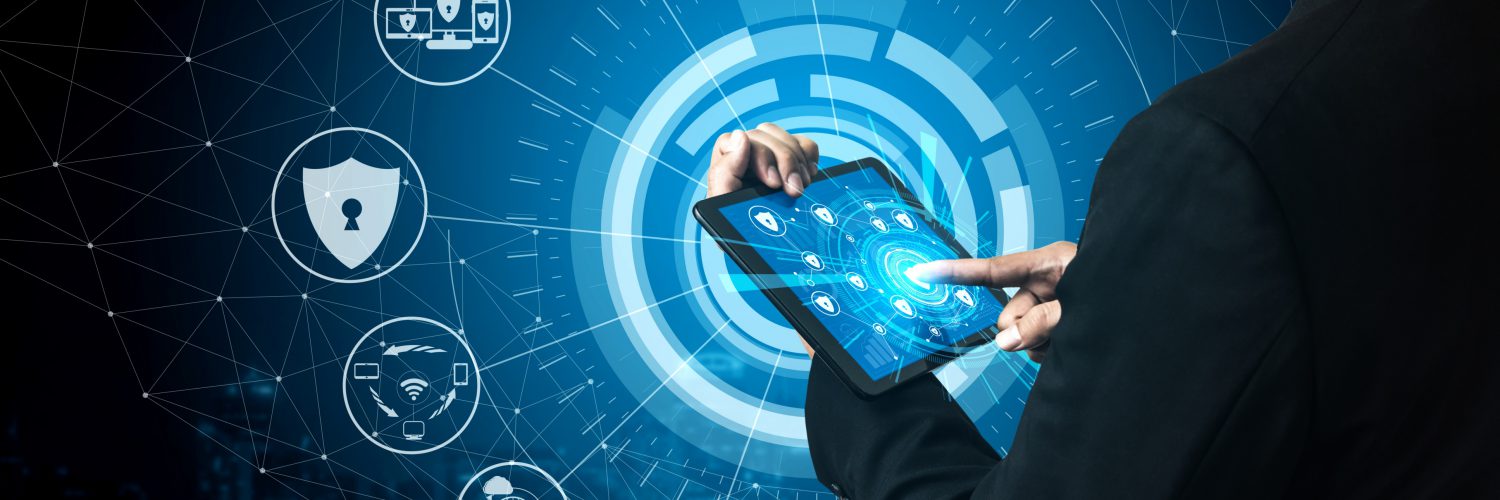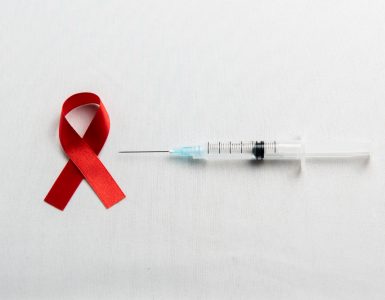At South by Southwest one evening last month, the night sky lit up with a sight straight out of science fiction: a glowing QR code created by several dozen drones hovering above downtown Austin. And yes, it was clickable. Holding a smartphone camera up to the code took users to a site promoting the new Paramount+ TV series Halo.
SXSW veterans have experienced (or endured) plenty of aggressively ambitious promotional campaigns over the years, but no one had ever seen anything quite like this. And it wasn’t even the week’s only buzzworthy effort involving a QR code.
At its “Should I Get a Tattoo That Says ‘Omnichannel’?” panel, CMI Media Group passed out temporary tattoos of a scannable QR code that led to the agency’s recruiting page. “It’s cute and it’s fun, and from a marketing perspective, it does what we want it to do: Drive people to more information,” says Carly Kuper, SVP of public relations and corporate communications for CMI Media Group.
If these are edge-case creative applications of QR codes, they nevertheless signify a trend among marketers across industries, including health and pharma: QR codes are in.
Or are they back? Perhaps the best example of their renewed favorable status among marketing types came on Super Bowl Sunday, when the cryptocurrency firm Coinbase aired a commercial that featured a QR code floating across the screen and changing colors every time it bounced off the side of the TV frame, like a circa-1997 screensaver. Coinbase paid nearly $14 million for the ad, but it drove more than 20 million users to its site in one minute. The commercial ranked among the most discussed on social media — the kind of attention money can’t buy.
QR codes (the letters stand for “quick response”) were invented in 1994 by Denso Wave, a subsidiary of Japanese auto company Denso. Unlike bar codes, which encode data one-dimensionally in a series of horizontal alternating high-contrast lines, QR codes store data in two dimensions using four standardized encoding modes in a matrix: numeric, alphanumeric, byte/binary and kanji, or logographic characters.
That allows for much higher information density than barcodes. Depending on the format and the resolution of the digital reader, a QR code the size of a postage stamp can encode more than a thousand bytes.
Advertisers first warmed to QR codes starting in the late 2000s, but consumers never truly bought into them. “There was a stage, back around 2009, where brands were looking to include QR codes on every execution,” recalls InStep Health chief sales officer Michael Byrnes. “But they had very low usage. After a few years, we barely ever printed a QR code on anything.”
There were two issues. The first was technological: While a smartphone camera can be the optical interface for scanning a QR code, it can’t actually decode the information stored in the black squares, lines and white space of the label. You need a QR reader for that — and in the early years of QR code advertising, that required downloading a third-party app to your phone.
According to Comscore, in June 2011 some 14 million smartphone users in the U.S. scanned a QR or barcode on their mobile device at least one time. That represented a mere 6.2% of the total number of smartphone users in the country.
The other issue was that QR codes didn’t have an obvious purpose. People weren’t used to scanning a code to get information, so why go through all that extra effort? QR codes were solving a problem that didn’t exist … yet. Throughout the 2010s, they remained a novelty, a curio stamped nearly everywhere but largely ignored, at least among users in the U.S.
Then COVID-19 hit, and the utility of a touch-free form of dense information exchange was suddenly blindingly obvious.
“The pandemic drove significant growth in QR code adoption, because QR codes enable contactless, hygienic interactions,” says Peter Adrian, an analyst for the research firm Insider Intelligence.
Concerns about COVID-19 transmission via infected surfaces were eventually proven meritless, but people have become used to scanning QR codes. It hasn’t hurt, of course, that most smartphones now have the capability to read QR codes without support from a separate app.
Insider Intelligence recently published a study which found that the number of users who scanned a QR code increased by a whopping 25% from 2019 to 2020. It predicts that, in 2022, 83.4 million smartphone users in the U.S. will scan a QR code. That represents 37.5% of smartphone users in the country.
Insider Intelligence’s report identified retail and hospitality businesses as the main boosters of QR codes, which now regularly appear on emerging marketing channels such as interactive TV, vehicle screens, billboards, public transit signage, product packaging, store shelves, business cards, shopping bags, nonfungible tokens and even the sides of buildings. But Adrian also notes their increasing use in healthcare — to, as he suggests, “provide more information about a drug or medical product that better captures the user’s attention, such as through videos. They can provide patient identity information. They can make it easier to fix medical equipment.”
Mark Pappas, SVP, growth and innovation at CMI Media Group, draws an analogy between the unlikely resurgence of QR codes and podcasts, both of which have been around for a while but exploded in popularity in large part due to the pandemic. Not surprisingly, he’s bullish about QR code applications in health, on the patient and clinician sides alike.
“We’ve all been in restaurants where there’s a QR code on the table to scan for the menu,” he explains. “You can take that same approach to the waiting room where, instead of having stacks of reading materials, there’s a QR code on the wall that will take the patient to a page with all the information they need. The same thing in the examination room — those charts on the walls now have QR codes on them.”
The magnitudes-greater capacity of QR codes, particularly vis-à-vis barcodes, makes them useful for storing patient information as well. Healthcare providers can scan QR codes on patient wristbands or medication labels, or ones printed on a leave-behind from a rep.
In theory, this eliminates the need to go searching for medication-specific information. One quick scan and they “quickly get all the dosing information, contraindications, comorbidities, all that fun stuff,” Pappas continues. “It’s the perfect technology for this time we’re going through, where everyone wants to be contactless. And the applications are limitless.”
Byrnes says InStep Health has put QR codes on inserts it places in stores; on flyers and printed materials in offices; on surveys for feedback; and on information sent to physicians by HCP liaison teams. One brand, he reports, printed a QR code that would take consumers to a portal where they could communicate directly with physicians.
Byrnes adds that the most unique way InStep and its pharma clients have been using QR codes is to convey fair balance, the FDA requirement that product ads present a drug’s risks in a reasonably similar fashion to the presentation of its benefits. One client, Byrnes reports, put a QR code on a print ad to meet the fair balance standard.
InStep asked the organization about doing a similar execution on a digital out-of-home display at pharmacies; after some back-and-forth over the details, its MLR team gave the go-ahead. The ad — an unbranded reminder, which lowers the amount of info required for fair balance — is animated and displays the QR code for 10 seconds.
The central question remains whether enough information is provided, but Byrnes says it comes down to the time the ad gives the consumer to react to take that information. Until the Food and Drug Administration hammers out guidelines for QR codes and fair balance, he notes, “It’s sort of uncharted waters.”
Looking ahead, it’s hard to find too many health marketers who aren’t excited about even more transformative uses of QR codes, such as launching augmented reality experiences. AR codes are QR codes with a marker for Augmented Reality JavaScript, a library that allows developers to introduce AR features and functionality to any website using a few lines of HTML. Scanning an AR code redirects the user to an AR web app or mobile app with a designed experience that can include interactive content or an immersive environment.
For Byrnes, it’s easy to imagine applications of that technology for pharma brands, such as directing users to connect with a human to get more information or to view a 3-D instructional video for a medical device.
“In an industry that struggles with innovation because of regulatory restraints, it is an interesting tool to play with and test,” he says. “We need to find the renegades to push the envelope. The utility is there, and more and more of us are getting comfortable with it.
“But we’re still just scratching the surface,” Byrnes adds. “It blows your mind what you can actually do with these things.”






![[branded content] De vijf belangrijkste customer experience trends voor 2024](https://www.pharmamarketeer.nl/wp-content/uploads/2024/04/customer-experience-80x60.jpg)



